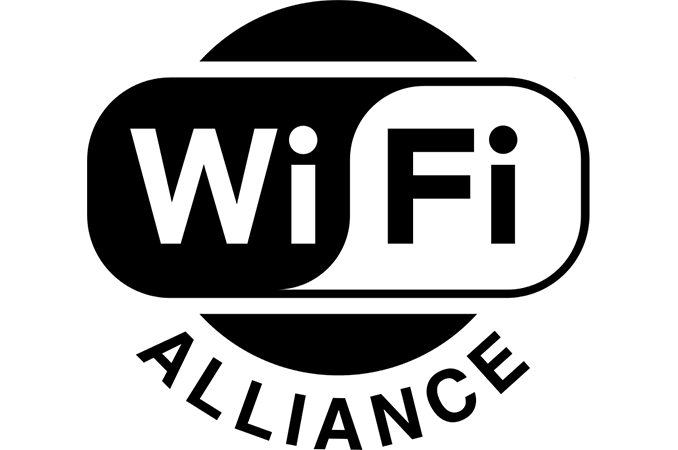Wi-Fi HaLow: Long-Range, Low-Power Wi-Fi for Internet-of-Things Devices
by Anton Shilov on January 6, 2016 1:37 AM EST
There are more than 6.8 billion devices with Wi-Fi technology in use today, but the number of devices that need to share data or access the Internet wirelessly will grow exponentially in the coming years because various wearables, driverless cars, smart sensors and other devices that belong to the Internet-of-Things (IoT) world. The Wi-Fi Alliance this week announced the IEEE 802.11ah standard, which was developed specifically for IoT devices. The tech will be formally called the Wi-Fi HaLow.
The 802.11ah operates in 900 MHz band, which helps to cut down power consumption, extend transmission range, improve propagation (the ability to transmit in the presence of many interferences) and penetration (the ability to transmit through various barriers, such as walls or floors). It is expected that the radius of a Wi-Fi HaLow device will be twice that of modern Wi-Fi standards (i.e., 500 meters in case of the 802.11n) and up to one kilometer, which can be further extended using relay. Actual data-rates supported by the 802.11ah will not be too high: the tech uses 802.11a/g spec with up to 26 channels that provide up to 100 Kb/s throughput.
The Wi-Fi HaLow technology was designed to enable communications between devices at longer distances and/or in challenging environments (with many barriers) using relatively low amounts of power. The tech could challenge both Bluetooth and cellular networks eventually since it combines the best of both worlds: low power operation as well as relatively long range. Moreover, unlike Bluetooth and other short-range radio technologies, the 802.11ah can connect devices directly to the Internet.
Since many devices supporting the Wi-Fi 802.11ah will also be able to operate in 2.4 and 5 GHz bands, they will also support traditional 802.11n/ac technologies and will be able to send and receive data at higher transfer-rates when possible.
The WiFi HaLow will unlikely replace Bluetooth completely due to the vast ecosystem that already uses the technology. However, it will compete against Bluetooth in the future. It will also not be able to replace cellular networks because they are ubiquitous.
The Wi-Fi HaLow 802.11ah technology has a lot of potential and is something that IoT needs. The 802.11ah will enable communications both for tiny battery-operated wearables as well as for various applications that cannot connect using today’s Wi-Fi technology. For example, the Wi-Fi HaLow can connect all personal health trackers at a hospital to its central servers, or enable communications between various machines at a large agriculture or industrial facility.
The Wi-Fi Alliance claims that its technologies operate in unlicensed spectrum; therefore, the Wi-Fi HaLow should not interfere with existing wireless technologies. Nonetheless, it should be noted that 900 MHz band is licensed in some countries. Therefore, the tech may not work everywhere, which will likely slowdown its adoption by the industry.
At present, the Wi-Fi 802.11ah is still a draft specification. Later this year it will be approved by the IEEE Std P802.11ah working group.
Source: Wi-Fi Alliance











18 Comments
View All Comments
zeealpal - Wednesday, January 6, 2016 - link
The part about 900 MHz being used will be a problem here in Australia,Depending on your carrier (but all to some aspect) the 900 MHz band is used for 2G, 3G and 4G, and 2/3 of the networks are likely to use it as 3G 900 for quite a while.
Guess that means no WiFi HaLow at all (in Aus?)
zeealpal - Wednesday, January 6, 2016 - link
Or would it just operate in the standard WiFi bands instead?doggface - Wednesday, January 6, 2016 - link
Yeah. I was thinking that too. Not compliant for Aus.TalezMB - Wednesday, January 6, 2016 - link
They are different frequencies. GSM/UMTS 900 is 890 – 915 MHz for the UL and 935 – 960 MHz for the DL. The 900MHz ISM band is snugly between them in Australia at 918 - 926MHz and there's also the cordless telephone allocation at 857-865MHz that could also be used once officially repurposed.extide - Wednesday, January 6, 2016 - link
900 Mhz is also a licensed band in europe, I believe. I think the equivalent ISM band is 860Mhz there, so I bet they will release a version for that frequency as well.WorldWithoutMadness - Wednesday, January 6, 2016 - link
The scenario usage is very limited with the speed up to 100 Kb/s, not for your everyday person.For IoT stuffs like sensor, I think that is sufficient but I can't imagine this competing against bluetooth at all when they have very distinctive usage scenario with their respective specification.
I might consider HaLow as a complimentary to the system we have, Bluetooth and WiFi where bluetooth gives you, short range,low power and medium speed (24Mb/s) and Wifi gives you, decent range and high speed.Now we get extra range (1 km) usage scenario with 100 Kb/s and low power to utilize IoT.
Of course I don't know the exact specification of ah mode, whether it can work in tandem with the normal wifi mode so it can actually compete against bluetooth. Imagine wireless peripherals such as wireless mouse and keyboard don't need separate dongle anymore.
nathanddrews - Wednesday, January 6, 2016 - link
I think you answered your own question with your third paragraph. AH will probably be integrated into many future routers and wifi devices, right alongside A/B/G/N/AC. For devices that need more bandwidth than AH, they could use one of the other standards. Still, I think the biggest problem they face is the sheer proliferation of BT devices.TalezMB - Wednesday, January 6, 2016 - link
It's not really a consumerish standard although it could be in the future. The first implementations are most likely going to be utility companies looking to make the smart grid smarter. Your typical meters can connect to a customer's 802.11ah network or the power company may elect to provide BPL as backhaul and turn the power meter into an 802.11ah AP for the other meters.By leveraging realtime information on what devices are operating inside the house (all of these devices in theory being connected to the same 802.11ah network) the electric company may be able to smooth out demand by possibly delaying appliances from operating or make the demand better match the supply curve of renewable resources. Imagine your water company calling you up and telling you that you have a leak instead of receiving a nasty bill that month or being able to tell a washing machines to delay washing because of water main flushing in the area saving you getting back some extremely dirty clothes.
nathanddrews - Wednesday, January 6, 2016 - link
Now imagine the Eco-SWAT storming your house, arresting you for using too much water or electricity. It's bad enough that ads and feds are constantly watching our cyber activity... I'm not sure I'm ready to embrace that level of connectivity.#foilhat
nathanddrews - Wednesday, January 6, 2016 - link
Hopefully that came across as a joke... I don't actually believe that will happen.